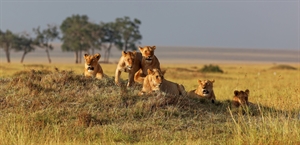The Rift Valley’s scenic landscapes and the tropical Indian Ocean coastline make East Africa popular with travellers, particularly those looking to see the “big five” game animals, rhino, elephant, buffalo, lion and mountain gorilla. The region is considered the wellspring of human genetic diversity because so many early hominid remains have been discovered in places like Olduvai Gorge.
Great Lakes region
Lying in the Rift Valley are Lakes Tanganyika and Victoria, the second and third-largest fresh water lakes in the world. Others include Lakes Albert and Edward, Lake Malawi, Kivu and Turkana. Schistosomiasis, a parasitic disease, is a problem in some areas and you should seek good local advice before swimming in any of these lakes.
Altitude sickness
Many people visit Kenya to climb Kilimanjaro. If this is part of your plans, be aware of the risks and symptoms of altitude sickness. MyHealth Alberta has advice on altitude sickness, and you can also talk to your travel healthcare adviser if you have any concerns.
What are the medical facilities like in East Africa?
Healthcare facilities may be patchy and you should expect to be evacuated if you need any complex medical procedures. Your state or provincial health insurance will not cover you for treatment abroad so you need to purchase separate travel health insurance.
How can I protect myself from food- and water-borne illnesses in East Africa?
There is a risk of exposure to disease-causing organisms in food and water in East Africa. You can protect yourself by getting vaccinated against cholera, typhoid and hepatitis A. And normal travellers’ food and water precautions will reduce your exposure to other bacteria, viruses and parasites.
Do I need anti-malarials in East Africa?
Malaria prophylaxis is a must for travel in East Africa. Mosquito bites put you at risk of exposure to some other dangerous diseases, such as Zika, yellow fever, dengue, sleeping sickness and Rift Valley fever. So you should avoid bites where possible. Tetse flies are present in parts of East Africa and these carry sleeping sickness, a neurological disease caused by parasites. Learn more about avoiding these and other insect-borne diseases in our article.
Which East African countries are in the meningitis belt?
Central African Republic, Sudan, South Sudan, Uganda, Kenya, Ethiopia and Eritrea are all in the meningitis belt. If your visit is between December and June (the dry season) a shot against meningococcal meningitis may be recommended. The bacteria that causes meningococcal meningitis is spread person-to-person through respiratory droplets so this dangerous disease is very hard to avoid.
Is rabies endemic to East Africa?
Rabies can be contracted from an animal bite in East Africa and if you are going to a remote region or if you will be working with animals, this vaccination will be recommended. Children should be vaccinated against rabies as they may get bitten while playing with animals. Always seek advice from a healthcare worker if you are bitten or scratched by an animal in East Africa, even if you have been vaccinated against rabies.
Are any other immunizations recommended for East Africa?
You can protect your health by making sure that your boosters for tetanus, diphtheria and polio are up to date, and your healthcare adviser may recommend that you get vaccinated against hepatitis B.

